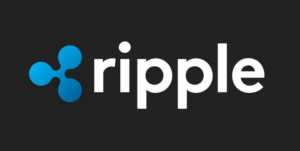XRP Faces Legal Crossroads: How Regulations Could Spark Crypto’s Next Rally

The U.S. District Court recently made a significant decision regarding Ripple’s attempt to lessen its $125 million penalty in the SEC lawsuit, marking a crucial turning point for XRP’s investment narrative. Judge Torres’ firm stance on maintaining the final judgment without compromise sends a clear message about the importance of regulatory clarity in ensuring the sustainability of crypto assets. This development may pave the way for a more secure future for XRP, minimizing legal uncertainties and fostering a higher level of trust from institutional investors.
Judge Torres’ decision not to reconsider the penalty, despite efforts by both Ripple and the SEC to come to an agreement, serves two key purposes. Firstly, it establishes the judiciary as a fundamental player in upholding statutory law, regardless of changes in regulatory priorities. Secondly, it provides investors with a sense of assurance by definitively resolving XRP’s legal status as a security in institutional sales, thus reducing the risks associated with prolonged legal disputes. While the $125 million penalty and permanent injunction remain in effect, preventing Ripple from selling XRP to institutional investors unless the ruling is overturned in the appeals process, the denial also prevents the SEC from renegotiating terms post-judgment, potentially discouraging future regulatory overreach in the crypto industry.
Following the court’s decision, XRP experienced a brief 5% price drop, reflecting the skepticism of short-term traders. However, the subsequent stabilization of XRP’s price suggests that investors are factoring in the legal finality of the ruling. Technical analysis indicates that XRP has maintained above its 200-day moving average since mid-2024, a positive signal of institutional backing. Furthermore, a divergence in market behaviors between Bitcoin and XRP might signal a potential decoupling, especially if Ripple’s RLUSD stablecoin gains more prominence through partnerships with entities like Wise and Mercury Mutual.
The recent clarity provided by regulatory decisions, such as the SEC’s shift towards regulatory sandboxes and abandonment of other crypto cases, has generated optimism within the crypto community. While the SEC may focus more on educating industry players than enforcing regulations in newer cases, Judge Torres’ ruling emphasizes that court orders must be adhered to for crypto assets to achieve legitimacy. This newfound legal certainty could lead to increased institutional interest in XRP once the appeals process concludes.
Despite the positive implications of the recent court decision, there are risks associated with prolonged appeals and the potential for regulatory shifts that could impact XRP’s growth. The lack of intrinsic utility beyond its network and vulnerability to market fluctuations may pose challenges for XRP in the long run. Nonetheless, investors with a medium to long-term outlook may find the denial of penalty reduction to be a promising sign for XRP’s future growth potential.
In conclusion, while Judge Torres’ ruling maintained Ripple’s penalty, it also eliminated a significant source of uncertainty for XRP investors. This decision, which underscores the importance of regulatory clarity in the crypto space, may signal a clearer path for XRP’s trajectory towards enhanced market stability and growth. For investors who choose to focus on the big picture, XRP’s journey towards $1 and beyond could be on a more solid footing.




